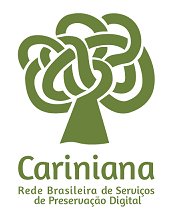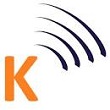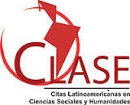Estatísticas de citações
DOI:
https://doi.org/10.5433/2176-6665.2009v14n1p69Palabras clave:
Avaliação, Fator de impacto, Índice H, Pesquisa científicaResumen
Este artigo é um relatório acerca do emprego e uso de citações na avaliação de pesquisas científicas. A idéia de que a avaliação da pesquisa deve ser feita empregando métodos “simples e objetivos” é cada vez mais prevalecente hoje no mundo acadêmico, o que tem gerado uma “cultura de números”, sustentada no pressuposto de que tais avaliações são mais precisas e buscam superar julgamentos subjetivos da revisão por pares. No entanto, tais considerações são analisadas por profissionais que “lidam com números” – os matemáticos e os estatísticos. A convicção nas estatísticas deixa de ter fundamento quando estas são mal aplicadas ou mal interpretadas, como pode ocorrer no caso de uso de estatística para classificar periódicos, documentos, pessoas, programas e disciplinas. Os autores chamam a atenção para a objetividade ilusória dos números e para o fato de que a avaliação baseada em dados de citações pode fornecer uma visão limitada, superficial e incompleta da qualidade da pesquisa.Descargas
Citas
AMIN, M.; MABE, M. Impact factor: use and abuse. Perspectives in Publishing, n. 1, p. 1-6, out. 2000.
BATISTA, Pablo Diniz; CAMPITELI, Monica Guimaraes; KINOUCHI, Osame; MARTINEZ, Alexandre Souto. Universal behavior of a research productivity index. arXiv: physics, v. 1, p. 1-5, 2005. arXiv:physics/0510142v1
BATISTA, Pablo Diniz; CAMPITELI, Monica Guimaraes; KINOUCHI, Osame. Is it possible to compare researchers with different scientific interests?. Scientometrics, v. 68, n. 1, p. 179-189, 2006. Disponível em: http://dx.doi.org/10.1007/s11192-006-0090-4.
BERGSTROM, Carl. Eigenfactor: masuring the value and presitige of scholarly journals. College & Research Libraries News, v. 68, n. 5, May 2007.
BEST, Joel. Damned lies and statistics: untangling the numbers from the media, politicians, and activists. University of California Press: Berkeley, 2001.
BIRD, Sheila; et al. Performance indicators: good, bad, and ugly; Report of a working party on performance monitoring in the public services. J.R.Statist. Soc. A, 168, Part 1, p. 1-27, 2005.
BROOKS, Terrence. Evidence of complex citer motivations. Journal of the American Society for Information Science, v. 37, n. 1, p. 34-36, 1986.
CAREY, Alan L.; COWLING, Michael G.; TAYLOR, Peter G. Assessing research in the mathematical sciences. Gazette of the Australian Math Society, v. 34, n. 2, p. 84-89, maio 2007.
COZZENS, Susan E. What do citations count? The rhetoric-first model.
Scientometrics, v. 15, n. 5-6, p. 437-447, 1989.
EGGHE, Leo. Theory and practice of the g-index. Scientometrics, v. 69, n. 1, p. 131-152, 2006. Disponível em: http://dx.doi.org/10.1007/s11192-006-0144-7
EVIDENCE REPORT. The use of bibliometrics to measure research quality in the UK higher education system, 2007. [Um relatório produzido para a Research Policy Committee of Universities (Comissão Universitária de Política de Pesquisa), Reino Unido, por Evidence Ltda., uma empresa especializada em análises e interpretação de desempenho de pequisa. Evidence Ltda. tem “aliança estratégica” com a Thomson Scientific.]
EWING, John. Measuring journals. Notices of the AMS, v. 53, n. 9, p. 1049-1053, 2006. Disponível em: http://www.ams.org/notices/200609/comm-ewing.pdf
GARFIELD, Eugene. Citation indexes for science: A new dimension in
documentation through association of ideas. Science, v. 122, n. 3159, p.108-11, jul. 1955. Disponível em: http://garfield.library.upenn.edu/papers/science1955.pdf
GARFIELD, Eugene. Citation analysis as a tool in journal evaluation. Science, v. 178, n. 4060, p. 471-479, 1972.
GARFIELD, Eugene. Why are the impacts of the leading medical journals so similar and yet so different? Current Comments, v. 2, p. 3, 12 jan. 1987.
GARFIELD, Eugene. Long-term vs. short-term journal impact (part II). The Scientist, v. 12, n. 14, p. 12-3, 6 jul. 1998.
GARFIELD, Eugene. Agony and the ecstasy – the history and meaning of the journal impact factor. In: INTERNATIONAL CONGRESS ON PEER REVIEW AND BIBLIOMEDICAL PUBLICATION, 2005, Chicago. Paper… Chicago, 16 sep. 2005.
GOLDSTEIN, Harvey; SPIEGELHALTER, David J. League tables and their limitations: Statistical issues in comparisons of institutional performance. J. R. Statist. Soc. A, v. 159, n. 3, p 385-443, 1996.
HALL, Peter. Measuring research performance in the mathematical sciences in Australian universities. The Australian Mathematical Society Gazette, v. 34, n. 1, p. 26-30, 2007.
HIRSCH, J. E. An index to quantify an individual’s scientific research output. Proc Natl Acad Sci USA, v. 102, n. 46, p. 16569-16573, 2006.
KINNEY, A. L. National scientific facilities and their science impact on nonbiomedical research. Proc Natl Acad Sci USA, v. 104, n. 46, p. 17943-17947, nov. 2007.
LEHMANN, Sune; JACKSON, Andrew D.; LAUTRUP, Benny E. Measures for measures, Nature, v. 444, n. 21, p. 1003-1004, 2006.
MACDONALD, Stuart; KAM, Jacqueline. Aardvark et al.: quality journals and gamesmanship in management studies. Journal of Information Science, v. 33, p. 702-717, 2007.
MARTIN, Ben R. The use of multiple indicators in the assessment of basic research, Scientometrics, v. 36, n. 3, p. 343-362, 1996. Disponível em: http://dx.doi.org/10.1007/BF02129599
MARTIN, Ben R.; IRVINE, John. Assessing basic research. Research Policy, v. 12, p. 61-90, 1983. Disponível em: http://dx.doi.org/10.1016/0048-7333(83)90005-7.
MEHO, Lokman; YANG, Kiduk. Impact of data sources on citation counts and rankings of LIS faculty: Web of Science vs. Scopus and Google Scholar. Journal of the American Society for Information Science and Technology, v. 58, n. 13, p. 2105-2125, 2007. Disponivel em: http://dx.doi.org/10.1002/asi.20677.
MOLINARI, J. F., MOLINARI, A. A new methodology for ranking scientific nstitutions. To appear in Scientometrics, 2008. Disponível em: http://imechanica.org/files/paper.pdf
MONASTERSKY, R. The number that’s devouring science. Chronicle Higher Ed., v. 52, n. 8, 2005. Disponível em: http://chronicle.com/free/v52/i08/08a01201.htm
ROSSNER, Mike; VAN EPPS, Heather; HILL, Emma. Show me the data. Journal of Cell Biology, v. 179, n. 6, p. 1091-1092, 17 dez. 2007. http://dx.doi.org/10.1083/jcb.200711140
SEGLEN, P. O. Why the impact factor for journals should not be used for evaluating research; BMJ, v. 314, n. 497, 15 fev. 1997. Disponível em: http://www.bmj.com/cgi/content/full/314/7079/497.
SIDIROPOULOS, Antonis; KATSAROS, Dimitrios; MANOLOPOULOS, Yannis. Generalized h-index for disclosing latent facts in citation networks, v. 72, n. 2, p. 253-280, aug. 2007.
STRINGER, M. J.; SALES-PARDO, M.; NUNES AMARAL, L. A. Effectiveness of journal ranking schemes as a tool for locating information. PLoS ONE, v. 3, n. 2, 2008. Disponível em: http://dx.doi.org/10.1371/journal.pone.0001683
THOMSON: JOURNAL CITATION REPORTS. 2007. Disponível em: http://scientific.thomson.com/products/jcr/
THOMSON: SELECTION. 2007. Disponível em: http://scientific.thomson.com/free/essays/selectionofmaterial/journalselection/
THOMSON: IMPACT FACTOR. Disponível em: http://scientific.thomson.com/free/essays/journalcitationreports/impactfactor/
THOMSON: HISTORY. Disponível em: http://scientific.thomson.com/free/essays/citationindexing/history/
THOMSON: FIFTY YEARS. Disponível em: http://scientific.thomson.com/free/essays/citationindexing/50y-citationindexing.
Descargas
Publicado
Cómo citar
Número
Sección
Licencia
Los derechos de autor de los artículos publicados en Mediations son del autor; En caso de republicación parcial o total de la primera publicación, se solicita a los autores que indiquen la publicación original en la revista.
Mediações utiliza la licencia Creative Commons Attribution 4.0 International, que proporciona acceso abierto, permitiendo a cualquier usuario leer, descargar, copiar y difundir su contenido, siempre que esté debidamente referenciado.
Las opiniones emitidas por los autores de los artículos son de su exclusiva responsabilidad.































